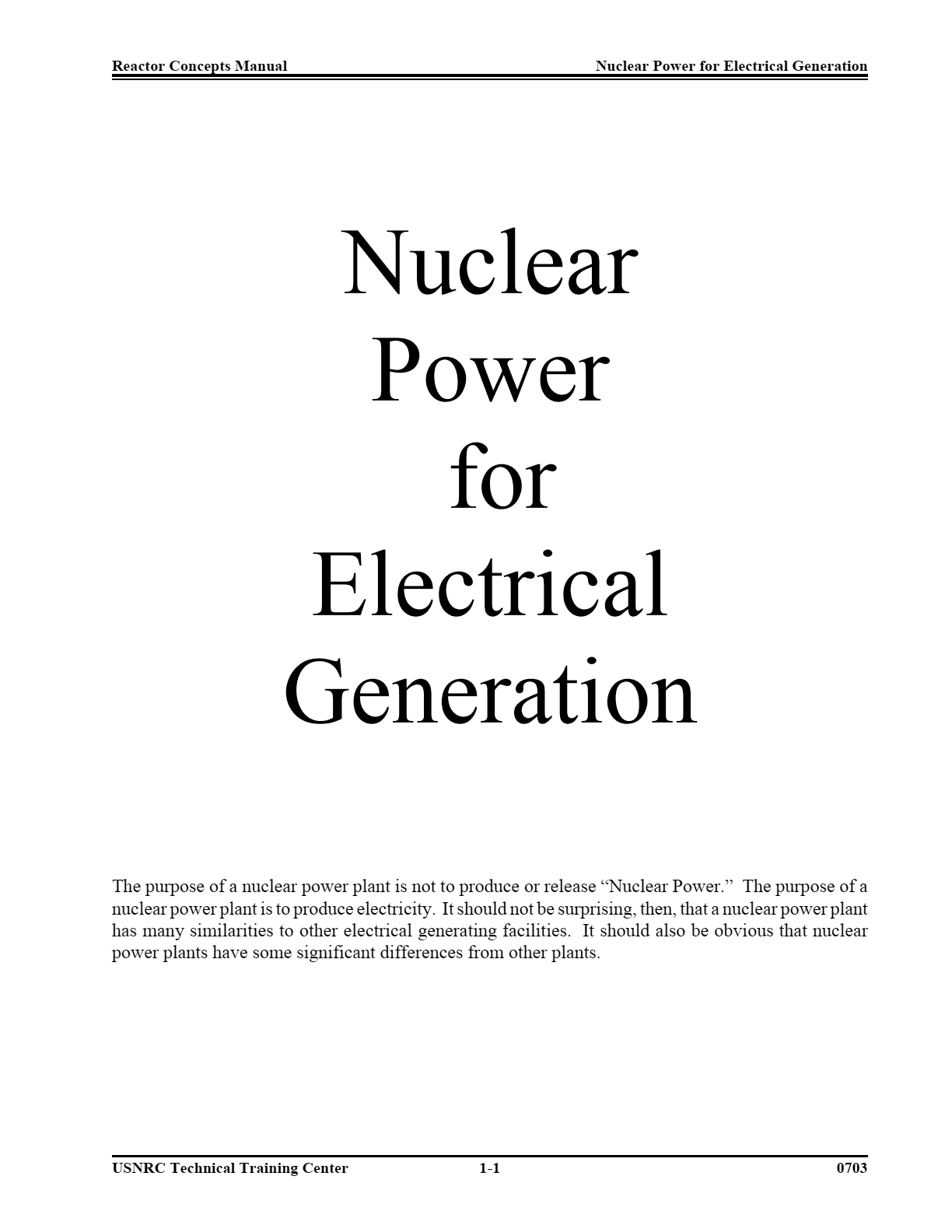Nuclear power plants
The purpose of a nuclear power plant is not to produce or release “Nuclear Power.” The purpose of a nuclear power plant is to produce electricity. It should not be surprising, then, that a nuclear power plant has many similarities to other electrical generating facilities.

It should also be obvious that nuclear power plants have some significant differences from other plants.
Of the several known methods to produce electricity, by far the most practical for large scale production and distribution involves the use of an “electrical generator.” In an electrical generator, a magnet (rotor) revolves inside a coil of wire (stator), creating a flow of electrons inside the wire.
When a turbine is attached to the electrical generator, the kinetic energy (i.e., motion) of the wind, falling water, or steam pushes against the fan-type blades of the turbine, causing the turbine, and therefore, the attached rotor of the electrical generator, to spin and produce electricity.

The most common fuel for the electrical producing reactor plants in the United States is uranium. The uranium starts out as ore, and contains a very low percentage (or low enrichment) of the desired atoms (U-235). The U-235 is a more desirable atom for fuel, because it is easier to cause the U-235 atoms to fission (split) than the much more abundant U-238 atoms.
Therefore, the fuel fabrication process includes steps to increase the number of U-235 atoms in relation to the number of U-238 atoms (enrichment process).
| Title: | The basics of nuclear power for electrical generation – USNRC Technical Training Center |
| Format: | |
| Size: | 1.20 MB |
| Pages: | 24 |
| Download: | Right here | Video Courses | Membership | Download Updates |


